For DIY cologne, you'll find several effective natural musk substitutes that create rich, lasting scents. Ambrette seed delivers sweet, woody notes while labdanum provides warm, amber-like tones. You can also combine vetiver and patchouli for earthy depth, or layer oud with vanilla for a complex musky base. These ethical alternatives protect endangered musk deer and offer unique opportunities to craft your signature scent with the right techniques and combinations.
Understanding Natural Musk and Its Significance
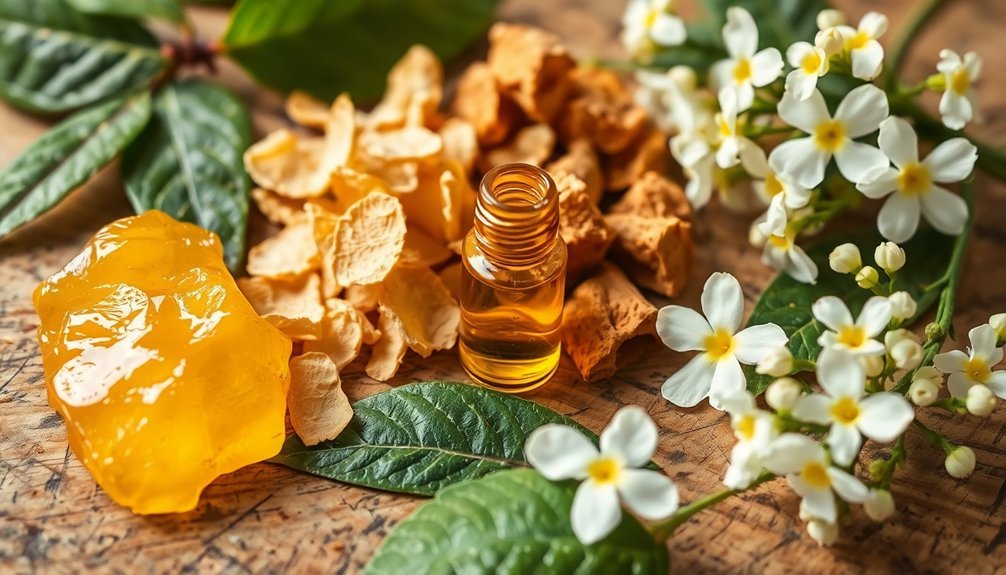
While natural musk has been prized in perfumery for centuries, its origins and ethical implications deserve careful consideration. You'll find that this coveted ingredient comes primarily from musk deer glands, making it one of the world's most expensive animal products. The name itself traces back to Persian and Sanskrit roots.
Understanding natural musk's significance goes beyond its warm, cozy scent profile. It's not just about its ability to act as a fixative or its long-lasting properties. Modern perfumery often uses synthetic musk compounds to replicate the classic aroma.
You need to know that harvesting natural musk involves cruel practices that have endangered musk deer populations. That's why it's now heavily regulated and illegal in many regions.
While traditional Chinese medicine still uses natural musk, the perfume industry has largely shifted away from it due to these ethical and environmental concerns.
Top Botanical Alternatives for Musk
When seeking natural alternatives to animal musk, you'll find several botanical options that capture similar aromatic qualities. These substitutes offer unique characteristics and blending possibilities for your DIY cologne creations. Due to the need for more sustainable options after 50,000 animals were killed annually for musk extraction, botanical alternatives have become increasingly important.
| Plant Source | Scent Profile | Best Used For |
|---|---|---|
| Ambrette | Sweet, woody, sensual | White musk notes |
| Labdanum | Warm, amber-like | Black musk base |
| Vetiver/Patchouli | Earthy, deep | Complex musk accords |
| Oud/Vanilla | Woody, sweet | Fixative and longevity |
You can blend ambrette with labdanum for a rich musk accord, or combine vetiver and patchouli for an earthy foundation. Adding oud and vanilla to your blend will enhance its longevity and provide depth. Each botanical brings its own therapeutic benefits while offering sustainable alternatives to traditional musk ingredients.
Creating Balanced Musk-Like Blends
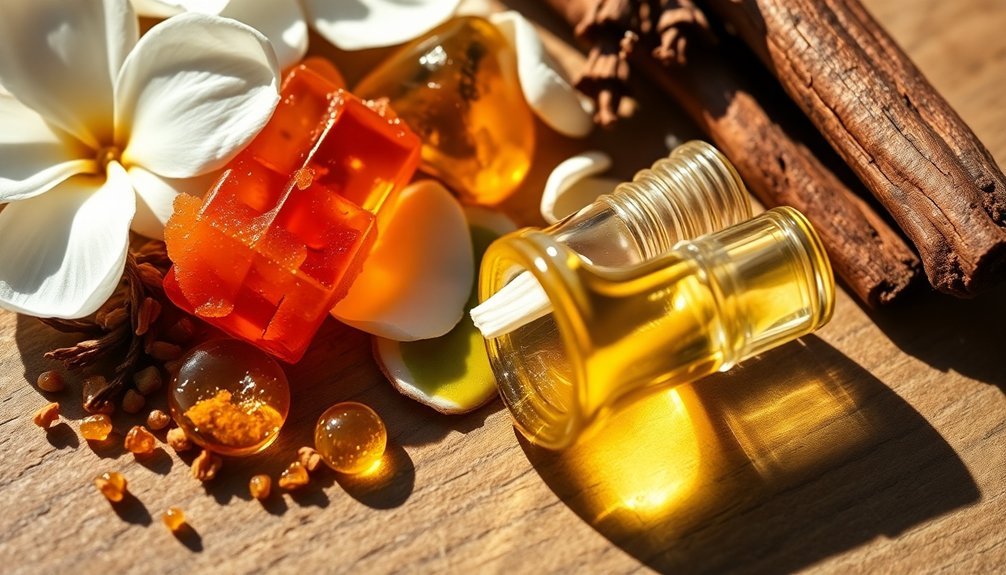
Creating balanced musk-like blends requires a strategic approach to layering and proportion.
You'll want to start by combining multiple base notes, such as labdanum and oud, to establish a strong foundation. When building your accord, layer these plant-derived musks gradually while monitoring how they interact with each other.
To avoid an overpowering scent, balance your strong musky notes with lighter, fresher elements. Ambrette seed oil serves as an excellent natural musk substitute that adds fresh, woody undertones.
Remember that patience is vital – your blend needs several weeks to mature properly, allowing the different components to integrate fully.
Don't be afraid to experiment with various combinations and ratios. Keep adjusting your formula until you achieve the desired musk-like profile.
Through careful blending and consistent testing, you can create a sophisticated cologne that captures the essence of traditional musk.
Essential Safety Guidelines for Natural Substitutes
Because natural musk substitutes can pose health risks, you'll need to follow strict safety protocols when crafting DIY cologne.
Always source your ingredients from reputable suppliers who test for contaminants like pesticides and heavy metals. When working with ambrette seed, angelica root, or galbanum, you must carefully control the amounts to prevent adverse reactions.
Before applying your cologne, perform a patch test on a small area of skin to check for allergies or sensitivities.
Remember that natural oils can disrupt hormone function if not properly formulated, so stick to recommended dilution rates.
You'll also want to store your ingredients properly to maintain their quality and prevent degradation.
Don't forget to document your formulations and keep detailed records of which ingredients you're using and their proportions.
Tips for Achieving Long-Lasting Natural Scents

The art of making natural scents last longer builds upon proper safety protocols. To maximize your DIY cologne's longevity, start with well-moisturized skin using an unscented, oil-based product. This creates a foundation that can extend fragrance retention by up to 30%.
Apply your natural musk substitute directly to pulse points without rubbing, as friction can accelerate evaporation.
- Layer complementary scents strategically, starting with a matching body wash to create depth and dimension.
- Store your DIY cologne in a cool, dark place to preserve its potency and prevent degradation.
- Consider your skin type – if you have dry skin, you'll need more frequent applications than someone with oily skin.
For touch-ups throughout the day, carry a small atomizer filled with your natural creation.
Frequently Asked Questions
Can I Combine Synthetic and Natural Musks in My DIY Cologne?
Yes, you can combine synthetic and natural musks for your DIY cologne. You'll get better versatility, complexity, and cost-effectiveness while creating unique scent profiles. Just make certain you're using safe, regulated synthetic options.
How Do Different Skin Types Affect the Longevity of Musk Substitutes?
Your skin type greatly affects how long musk scents last. If you've got oily skin, they'll last longer, while dry skin shortens their staying power. Normal skin provides balanced, even fragrance diffusion.
What's the Ideal Temperature Range for Storing Homemade Musk-Based Cologne Blends?
You'll want to store your homemade musk-based cologne between 55-65°F (13-18°C) in a dark place. Don't let temperatures exceed 70°F (21°C), as this can alter the fragrance's chemical composition.
Do Seasonal Changes Impact the Effectiveness of Natural Musk Alternatives?
Yes, seasonal changes affect your natural musk alternatives. You'll notice variations in botanical musks' intensity and character due to harvest timing, while synthetic options like Ambroxan stay consistent year-round regardless of weather conditions.
Can Natural Musk Substitutes Trigger Allergic Reactions in Sensitive Individuals?
Yes, you can experience allergic reactions to natural musk substitutes. Ambrette seed, labdanum, and ylang ylang may cause skin irritation, while others like vetiver and angelica root are generally safer for sensitive individuals.
In Summary
By exploring these natural musk alternatives, you'll find that creating your own signature scent doesn't require synthetic musks. Whether you choose ambrette seed, angelica root, or labdanum, remember to start with small batches and test carefully. You're now equipped to blend these substitutes confidently, keeping safety in mind while achieving that warm, sensual base note you're after in your DIY cologne projects.

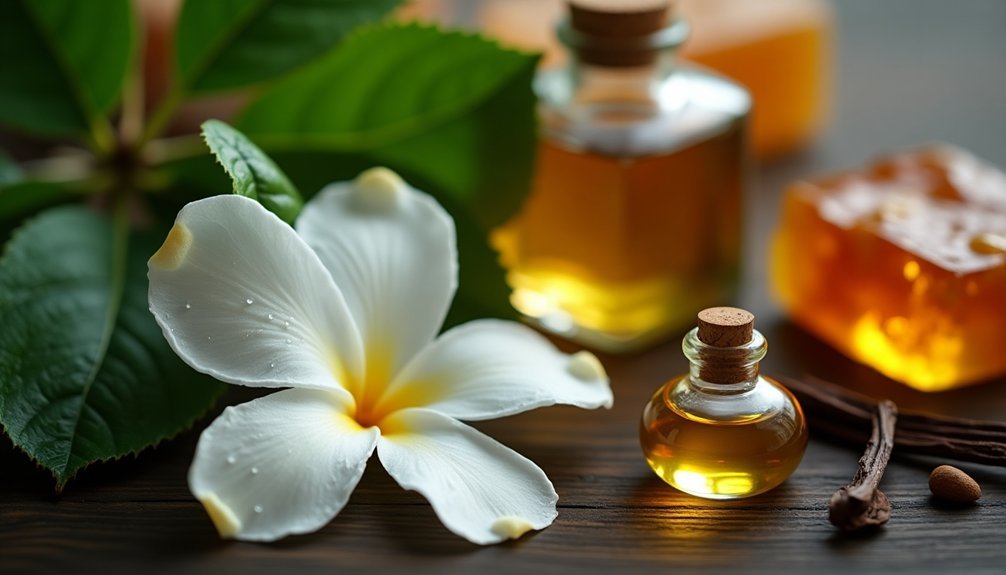
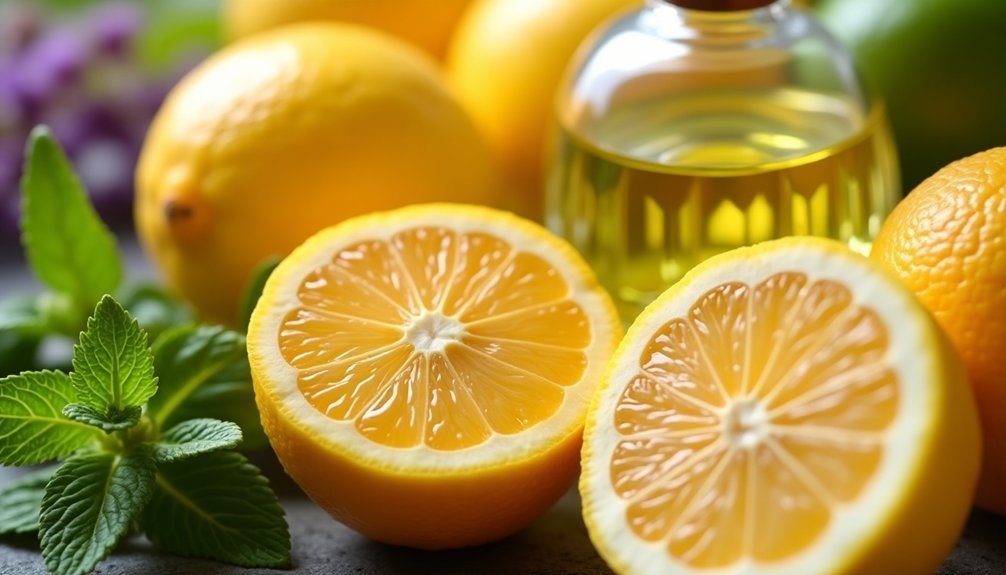
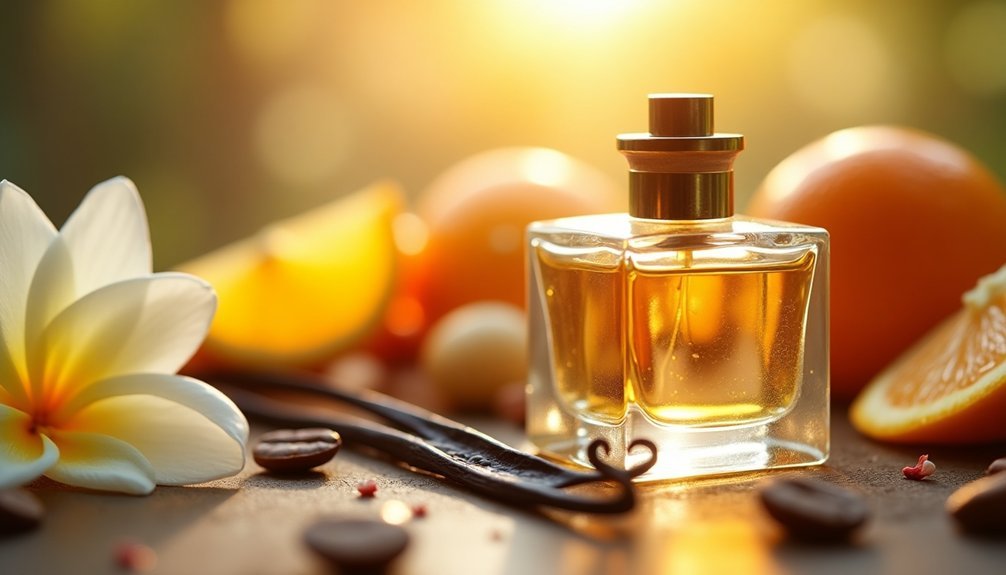

Leave a Reply